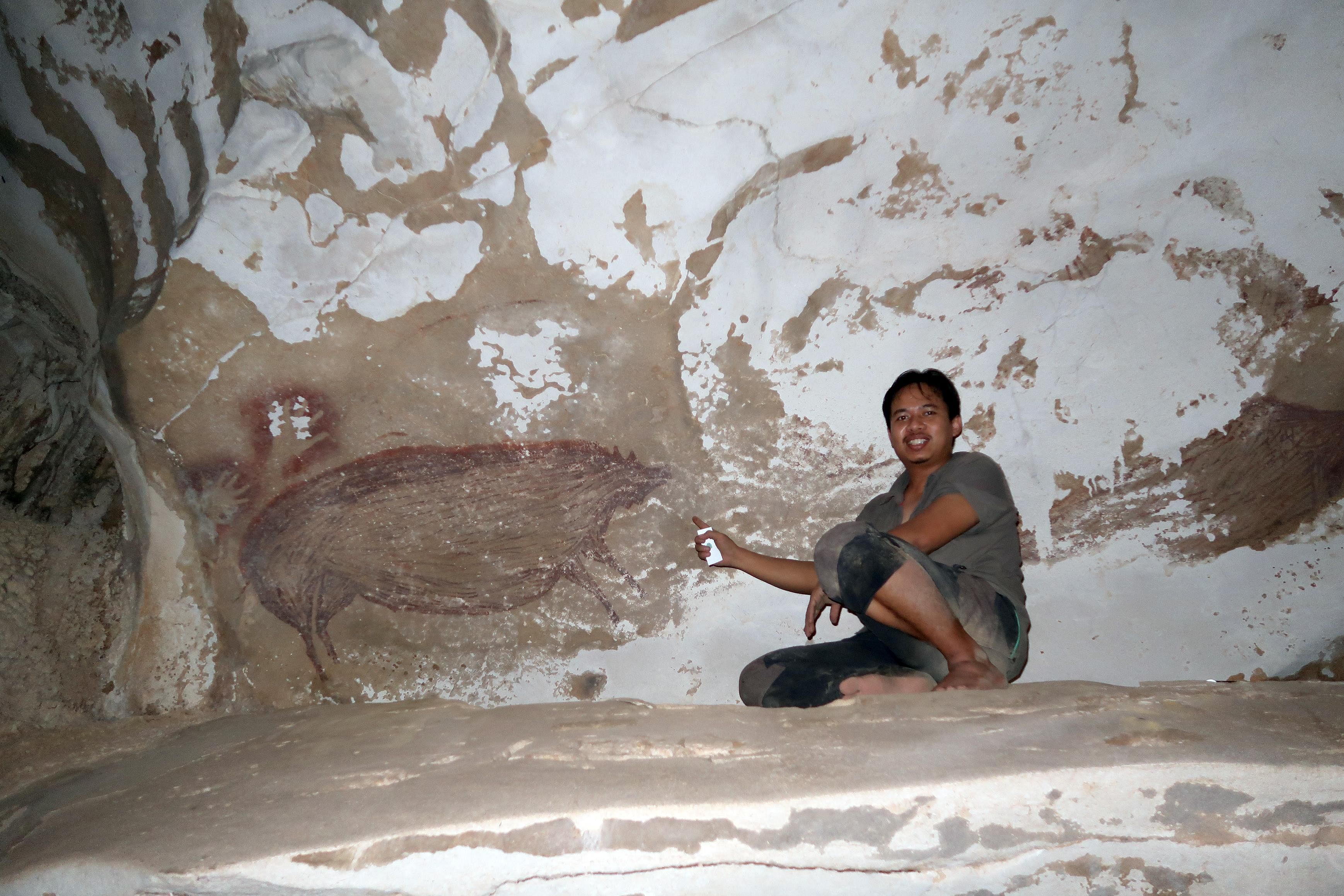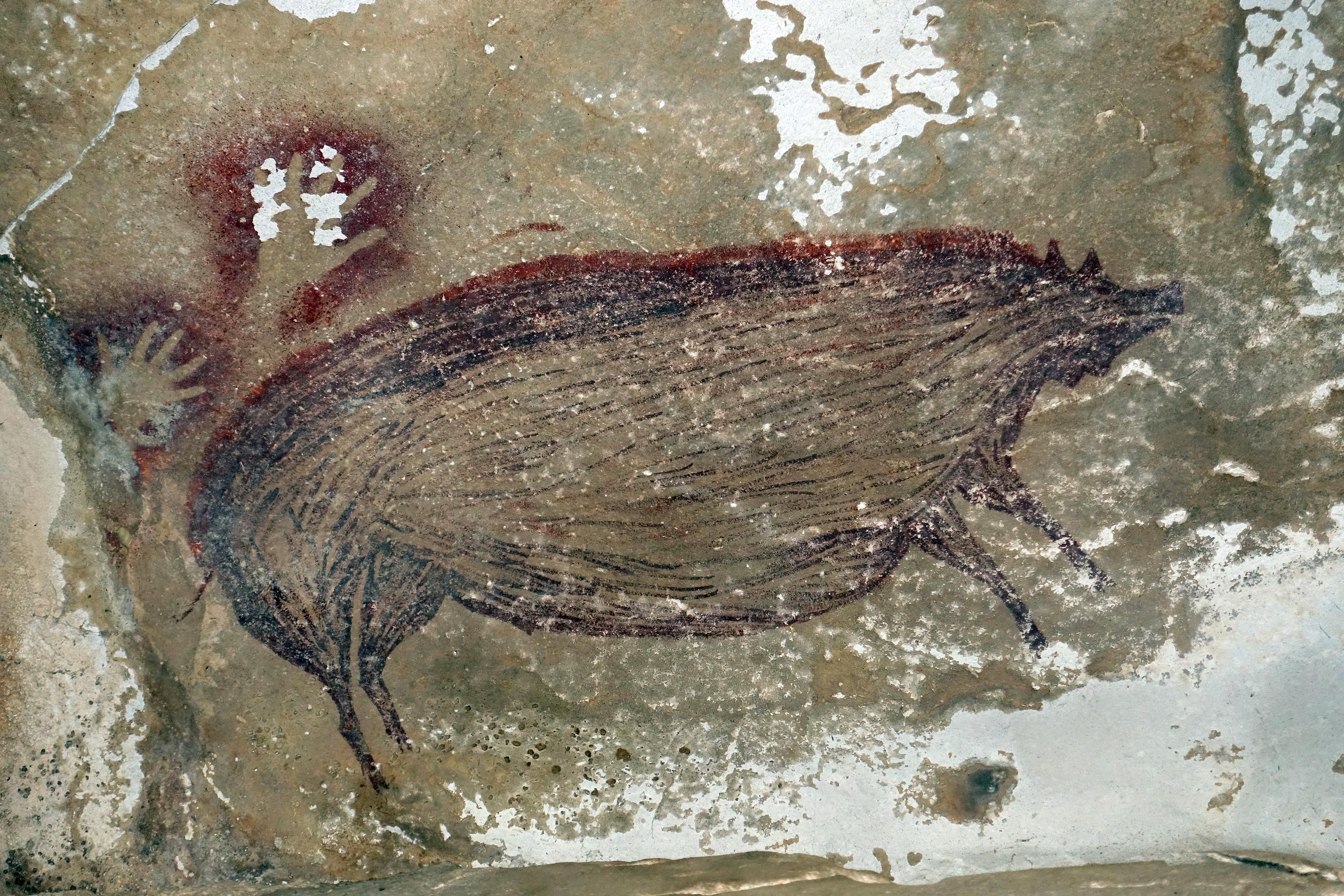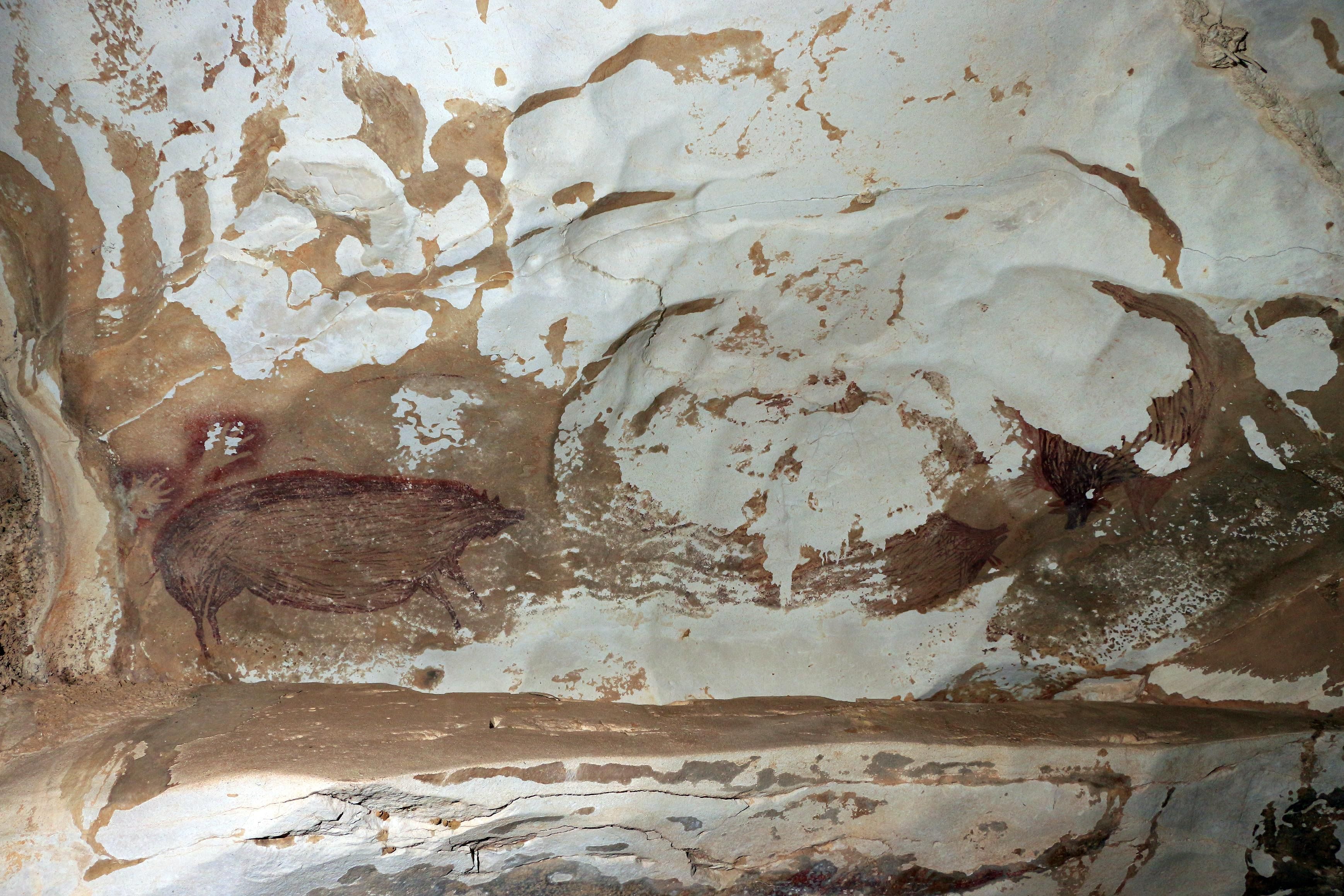Indonesian archaeologist Basran Burhan and his colleagues had finished scouring untouched sites in their search for ancient relics, but undiscovered prehistoric paintings on rocks, which they were looking for, still eluded them.
Undeterred, they went back to the drawing board - in this case, Google Maps, to zoom in on unexplored caves in the region.
It was November 2017, and Mr Basran and company were in the Maros-Pangkep karst region in South Sulawesi - a 450 sq km limestone landscape made up of a network of caves, valleys and jagged pinnacles.
The region, famed for its ubiquity of cave art and archaeological findings, has seen about 300 caves and shelters with ancient art discovered to date.
Mr Basran believed that if one cave was empty, the next one would have paintings. He set his sights on a small valley nestled amid a mountainous terrain, about 5km away from where they were.
"We believe that we can find archaeological sites anywhere in the Maros-Pangkep karst area, and we had never explored that particular valley," said Mr Basran, 36.
One week later, they set off for the remote valley from Makassar, South Sulawesi's capital. After driving about 60km to 70km north, they realised there was no road leading to the secluded valley. The only way to get there was to walk.
Although it was an arduous two-hour trek to the valley that was lashed by the November torrential rains, that trip turned out to be one of the best decisions in Mr Basran's explorations.
His team stumbled upon a small community of Bugis farmers living in the pristine valley covered with rice fields. After refuelling and resting in a farmer's house, the archaeologists started to search the caves in the area.
They eventually found a limestone cave - Leang Tedongnge - tucked away in a foothill.
The cavern was a mini Louvre, with the cave walls decorated with mostly red-pigmented paintings.
There were 84 pieces of prehistoric art - mostly hand outlines and sketches of Sulawesi wild pigs - along the exfoliated walls coated in damp moss.
Among them was a mural about 40m into the cave, just waiting to be discovered.
The sunlight was left behind as Mr Basran inched deeper into the cave, turning sharp corners along the way.
The beam of his torch landed on a wall atop a 2m-long ledge, revealing a scene: A painting of a complete portly wild pig with thin legs that seems to be watching at least two other hogs engaged in social interaction. The painting of the two other pigs was partially exfoliated.

Awestruck, Mr Basran took in the scene for a couple of minutes before calling his teammates over.
"It is a beautiful rock art scene, because it is difficult to find a storytelling painting like this in the Maros-Pangkep area," said Mr Basran, who is also a PhD candidate at Australia's Griffith University.
Many of the known cave paintings in Sulawesi depict just one animal or a cluster of hand outlines making a picture.
But in 2019, Mr Basran, his PhD mate Adhi Agus Oktaviana, 36, and their archaeology professors, as well as others from their university and collaborating institutions in Indonesia, published a paper on the discovery of an at least 43,900- year-old cave mural depicting human-animal figures hunting wild pigs and dwarf buffaloes. That narrative scene was also found in a cave in the Maros-Pangkep area.
In the Leang Tedongnge mural, the painting of one of the pigs was also notable because some portions of the sketch were overlaid with a darker red hue, creating a shadow or animation effect, said Mr Adhi, who is also a researcher at Indonesia's National Research Centre of Archaeology.
Mr Adhi added that the shadow effect could suggest the prehistoric artist's creativity.
Adding to Mr Basran's "Indiana Jones" moment, his finding was the only one unencumbered by moss and fungi among the 84.
"The position of the rock art panel was high up and easy to see. It was a lovely moment when I first saw it," recalled Mr Basran.

When he returned to the cave with Mr Adhi in January 2018, they found that the painting of the largest pig, which is 136cm in length, was the only one in the cave that could be easily dated as it had a speck of calcite (carbonate mineral) grown over it.
Through a process called uranium-series isotope dating, the age of the calcite can be derived to figure out the minimum age of the painting.
The following month, Mr Basran and Mr Adhi accompanied Griffith University geochemist Maxime Aubert to Leang Tedongnge, where the professor gingerly prised the 1.2cm-wide mineral deposit from the cave wall for testing in his lab.
A couple of months later, an exuberant Professor Aubert WhatsApped his archaeology colleagues and both PhD students to announce that the painting is at least 45,500 years old - making it the world's oldest-known cave painting.
Early this month, the painting's discovery and age were published in the journal Science Advances.
Although only the complete pig painting was dated, the researchers believe that the rest of the mural - including the two hand outlines printed next to the hog's hindquarter - could be around the same age.

The Griffith University research team, including Prof Aubert, Mr Basran, Mr Adhi and professor of archaeology Adam Brumm, have been blazing a trail with the discovery and dating of similar red-pigmented paintings in South Sulawesi since at least 2014.
That year, a project led by the two professors found that a stencilled image of a human hand found in a cave was created at least 39,900 years ago, and a painting of a pig-deer 35,400 years ago.
Rock art from that era is populated with hand stencils and animal paintings done with red ochre, a type of iron oxide.
Early Homo sapiens would grind the red clay - also known as the world's first red paint - using bones, turn it into paint by adding water, and use their fingers or brushwork to sketch on the walls.
They would make hand stencils - one of the oldest-known forms of cave art - by pressing their hands against the wall and blowing the ochre paint through hollow bones or shells. They would also paint images of animals native to the region, such as the hog, known as the Sulawesi warty pig, as well as dwarf buffaloes and pig-deers.
The red ochre is commonly found near the limestone caves in Indonesia.
Mr Basran said the Bugis folks from the valley had no clue that the world's oldest animal painting resided in Leang Tedongnge, as they had never ventured deep into the cave. But their ancestors from the valley may not be so different from present-day people.
Cave paintings can be linked to prehistoric rituals, but Singaporean archaeologist Noel Hidalgo Tan likes to see those works as the "Instagram of the past".
"There is a theory that the hand stencils are a form of personal expression because each hand shape is unique to each person," said the senior specialist in archaeology at the South-east Asian Ministers of Education Organisation's regional centre for archaeology and fine arts in Bangkok. "The paintings of pigs or buffaloes could be food pictures, like what we do on Instagram. They wanted to show everybody what they saw and say: 'Look at this animal, it is so delicious.'"
Various missions to find more archaic cave paintings in South-east Asia by the Griffith University researchers and others are overturning the Eurocentric notion that art originated in Europe.
"They used to call France's Cauvet cave the birthplace of art - which I found a little bit offensive. You don't have a monopoly on art. Art is universal," added Dr Tan.
Cave art also marks the footprints of early modern humans who travelled from the islands of Indonesia to Australia 65,000 years ago. Sulawesi - the largest island separated by the Asian and Australian continents - was a major crossover. Yet a 60,000-year-old rock artwork or archaeological relic has not been found on the island yet.
Thus, the work is cut out for Mr Basran and Mr Adhi, who will continue cave hunting and digging for potential excavation sites.
Although the Leang Tedongnge artwork is at least 45,500 years old, it could be older by a few millennia.
Meanwhile, Prof Aubert, who is a dating expert, is developing a new technique to home in on the exact age of some Indonesian cave paintings, to try to close that 20,000- year gap.


